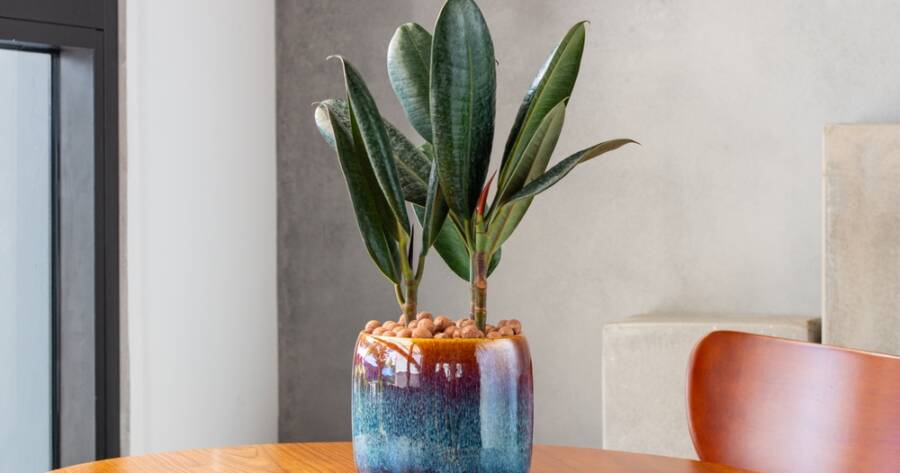Looking to breathe cleaner air and add life to your space without needing a green thumb? Some indoor plants do both—purifying the air and thriving with minimal care. Low-maintenance plants don’t just brighten your home; they also help remove toxins, making them ideal companions for healthier living. Which indoor plants are best for your home? Likely the tough ones that purify your surroundings!
Snake Plant: Tough, Stylish, and Air-Cleansing
The snake plant, also called Sansevieria or mother-in-law’s tongue, is one of the most resilient indoor plants. Its tall, upright leaves add a modern touch to any room, and it survives on little water or sunlight. It’s perfect for beginners who may forget to water or who have limited natural light.
Beyond looks, this plant contributes to a healthier home. Studies, including those by NASA, have shown that snake plants help filter toxins like formaldehyde and benzene. They even release oxygen at night, making them excellent bedroom companions. Snake plants thrive in corners, on floors, or even in decorative planters without fuss.
Peace Lily: Soothing Looks and Proven Purification
Peace lilies are known for their dark green leaves and delicate white blooms. Despite their graceful appearance, they’re quite hardy. These plants tolerate low light and only need weekly watering. If the leaves droop, it’s a clear sign they need water, making them easy to care for.
Peace lilies also made NASA’s list of air-purifying plants. They help remove airborne mold spores and volatile organic compounds (VOCs) that come from paints and cleaning supplies. This makes them especially helpful in bathrooms, kitchens, or home offices where chemicals are more likely to build up. Just keep them away from pets, as they can be mildly toxic when ingested.
Pothos: The Climbing Plant That Thrives on Neglect
If you’re prone to forgetting your plants, pothos is your perfect match. With trailing vines and heart-shaped leaves, this plant brings charm to shelves, desks, or hanging baskets. It adapts to many conditions—low light, bright light, or inconsistent watering—and keeps growing strong.
Pothos plants are natural air purifiers, reducing pollutants like xylene, toluene, and formaldehyde from the air. Their cascading vines can be trained along walls or kept trimmed for a bushier look. Plus, they root easily in water, which means you can grow new plants by snipping a stem and placing it in a jar.
ZZ Plant: Low-Light Champion and Dust Filter
The ZZ plant (Zamioculcas zamiifolia) is an indoor favorite for its glossy leaves and ability to survive nearly any environment. It thrives in low light, resists pests, and only needs watering every few weeks. Even if you’ve killed plants before, the ZZ plant stands a good chance of surviving in your home.
This plant not only survives under minimal conditions, but also filters pollutants from the air. It’s especially good at collecting dust on its broad leaves, which means less grime floating around your living space. Just wipe the leaves now and then to keep them shiny and healthy.
Rubber Plant: Big Leaves, Bigger Impact
The rubber plant is a member of the ficus family and has large, waxy leaves that make a bold statement. It’s another top pick for air purification, particularly when it comes to filtering formaldehyde. While it enjoys bright, indirect light, it can also adapt to moderate light settings.
Rubber plants grow tall over time, which makes them great natural room dividers or accent pieces. They prefer to dry out slightly between waterings and don’t need frequent attention. For the best effect, place them near a window with filtered sunlight, and they’ll repay you with steady growth and cleaner air.
Aloe Vera: Soothing and Simple
You might already know aloe vera for its healing gel, but the plant itself is a useful indoor addition. Aloe doesn’t require much care—just occasional watering and a sunny spot. Its fleshy leaves store moisture, so it’s forgiving if you forget a watering or two.
While aloe isn’t the strongest air purifier on this list, it does contribute to cleaner air by removing certain harmful compounds. And it’s multifunctional: the gel inside its leaves can be used to soothe burns, scrapes, and dry skin. That makes it one of the most practical houseplants around.
Spider Plant: A Natural Humidifier
Spider plants are great for adding greenery to your space with very little effort. They grow long, thin leaves and send out baby shoots—called “spiderettes”—that can be replanted or left to dangle. These plants thrive in moderate light and recover quickly from neglect.
Their strong air-cleaning properties include removing carbon monoxide, formaldehyde, and other pollutants. Spider plants also release moisture into the air, which can help keep indoor spaces from becoming too dry, especially in colder months. They’re safe for pets and grow well in hanging baskets or shelves.
The Health Benefits Go Beyond Air Quality
Indoor plants offer more than just cleaner air. Studies have shown that having greenery indoors can reduce stress, improve mood, and boost productivity. Plants like the ZZ plant and rubber plant add visual calm to your space, which can be especially helpful when working from home or trying to unwind after a busy day.
When you surround yourself with healthy, thriving plants, you’re more likely to feel connected to your environment. Even just a few minutes a week spent watering or checking on your plants can become a soothing ritual.
Breathe Easier and Live Greener
You don’t need to be a plant expert to enjoy the benefits of indoor greenery. With the right selection, you can clean your home’s air, add natural beauty, and feel a little more grounded each day.
Start with one easy-care plant like a snake plant or pothos, and watch how quickly your space—and your wellbeing—starts to improve. Clean air and calm living are just a plant away.

